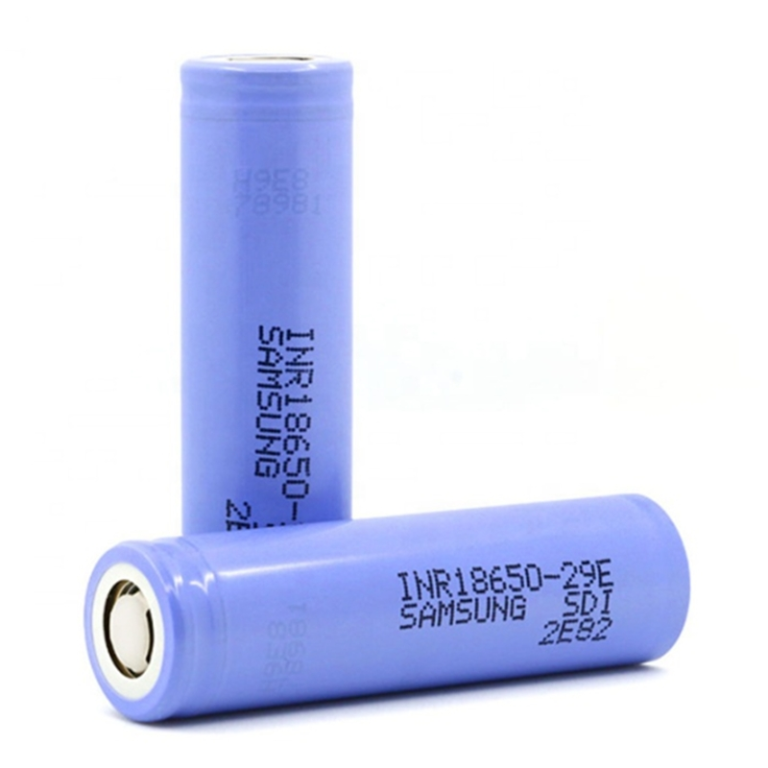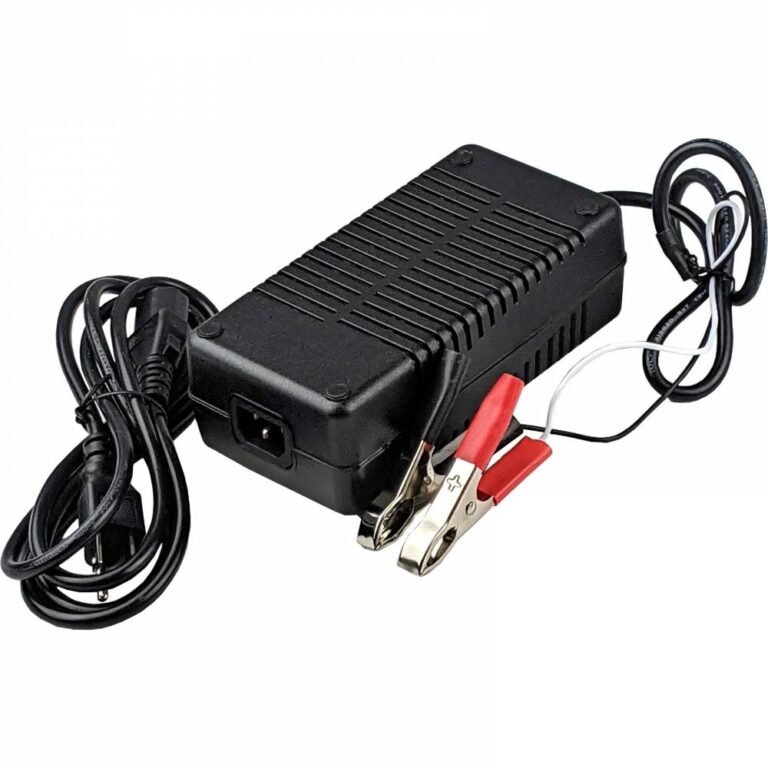What is battery?
A battery is a device that stores chemical energy and converts it into electrical energy to power various electronic devices. Batteries are an essential part of modern life, found in everything from smartphones and laptops to electric vehicles and industrial machinery. In this guide, we will explore what a battery is, the different types of batteries, how they work, and their applications.
How Does a Battery Work?
A battery consists of one or more electrochemical cells, each containing an anode (negative electrode), cathode (positive electrode), and an electrolyte. When a circuit is connected, a chemical reaction occurs, allowing electrons to flow from the anode to the cathode, generating electricity.
Types of Batteries
There are two main types of batteries: primary (non-rechargeable) batteries and secondary (rechargeable) batteries.
1. Primary Batteries
These are single-use batteries that cannot be recharged once depleted. Examples include:
1.1 Alkaline Batteries
An alkaline battery is a type of primary (non-rechargeable) battery that generates electricity through a chemical reaction between zinc and manganese dioxide (Zn/MnO₂). The battery’s name comes from the alkaline electrolyte (potassium hydroxide) used to facilitate this reaction.
How Do Alkaline Batteries Work?
Alkaline batteries operate based on electrochemical reactions:
- The anode (negative terminal) is made of zinc, which undergoes oxidation and releases electrons.
- The cathode (positive terminal) consists of manganese dioxide, which accepts electrons.
- The electrolyte (potassium hydroxide) allows ion flow, maintaining the chemical process and ensuring a steady supply of energy.
Key Features of Alkaline Batteries
- High Energy Density – Provides a longer-lasting charge compared to zinc-carbon batteries.
- Stable Voltage Output – Maintains a consistent 1.5V output for reliable performance.
- Leak-Resistant Design – Modern alkaline batteries are designed to minimize leakage, enhancing safety.
- Long Shelf Life – Can be stored for 5-10 years without significant capacity loss.
Applications of Alkaline Batteries
Due to their affordability and reliability, alkaline batteries are widely used in:
- Household Electronics – Remote controls, wall clocks, and game controllers.
- Toys and Flashlights – High-drain devices requiring stable power output.
- Medical Devices – Thermometers, blood pressure monitors, and hearing aids.
- Cameras and Audio Equipment – Some digital cameras and microphones use high-performance alkaline batteries.
Advantages of Alkaline Batteries
- Widely Available – Found in nearly every store worldwide.
- Affordable – Cost-effective compared to rechargeable alternatives.
- Safe for Everyday Use – Free from mercury and cadmium, making them environmentally safer than older battery types.
- No Maintenance Required – Unlike rechargeable batteries, they do not require recharging or special storage conditions.
1.2 What Are Primary Lithium Batteries?
Unlike secondary lithium batteries (such as lithium-ion and lithium-polymer batteries, which are rechargeable), primary lithium batteries are designed for single-use and offer long-lasting power without requiring recharging. These batteries have a significantly longer shelf life compared to alkaline and zinc-carbon batteries, making them ideal for devices that require extended standby power.
Types of Primary Lithium Batteries
There are several types of primary lithium batteries, each designed for specific applications:
1.2.1 Lithium-Thionyl Chloride (Li-SOCl₂) Batteries
- Voltage: 3.6V
- Features: High energy density, long lifespan (10+ years), wide temperature tolerance
- Applications: Industrial meters, medical devices, military equipment
1.2.2 Lithium Manganese Dioxide (Li-MnO₂) Batteries
- Voltage: 3.0V
- Features: High discharge rate, stable performance, cost-effective
- Applications: Digital cameras, flashlights, remote controls
1.2.3 Lithium-Iron Disulfide (Li-FeS₂) Batteries
- Voltage: 1.5V
- Features: Lightweight, higher capacity than alkaline batteries
- Applications: High-drain consumer electronics, cameras, toys
Key Advantages of Primary Lithium Batteries
- High Energy Density: Provides more power in a compact size compared to alkaline and zinc-based batteries.
- Long Shelf Life: Can last 10+ years in storage without significant self-discharge.
- Wide Operating Temperature Range: Works efficiently in extreme conditions (-40°C to +85°C).
- Lightweight Design: Ideal for portable and aerospace applications.
- Reliable Performance: Delivers consistent voltage and power output.
Applications of Primary Lithium Batteries
Primary lithium batteries are widely used in various industries due to their long-lasting power and high reliability:
- Medical Devices: Pacemakers, insulin pumps, defibrillators
- Security Systems: Smoke alarms, motion sensors
- Industrial Equipment: Utility meters, GPS trackers
- Consumer Electronics: Cameras, remote controls, hearing aids
- Military & Aerospace: Emergency beacons, satellite systems
1.3 What Are Zinc-Carbon Batteries?
A zinc-carbon battery is a type of primary (non-rechargeable) battery that provides reliable power for various low-drain electronic devices. These batteries have been widely used for decades due to their affordability, availability, and simple design. In this article, we will explore what a zinc-carbon battery is, how it works, its advantages, and common applications.
How Does a Zinc-Carbon Battery Work?
A zinc-carbon battery consists of three key components:
- Anode (Negative Electrode): Zinc casing, which also acts as the container.
- Cathode (Positive Electrode): Manganese dioxide (MnO₂) mixed with carbon.
- Electrolyte: A paste of ammonium chloride (NH₄Cl) and zinc chloride (ZnCl₂) that facilitates the movement of ions.
When the battery is in use, a chemical reaction between the zinc anode and manganese dioxide cathode generates an electric current, powering the connected device.
Types of Zinc-Carbon Batteries
There are two common types of zinc-carbon batteries:
- Leclanche Cell: The traditional version that uses ammonium chloride as the main electrolyte.
- Zinc-Chloride Battery: An improved version with zinc chloride as the primary electrolyte, offering better performance and longer life.
Advantages of Zinc-Carbon Batteries
- Cost-Effective: One of the most affordable battery types available.
- Widely Available: Found in almost any store worldwide.
- Lightweight: Ideal for portable and household devices.
- Eco-Friendly: Contains fewer hazardous materials compared to some other battery types.
- Reliable for Low-Drain Devices: Performs well in clocks, remote controls, and flashlights.
Common Applications of Zinc-Carbon Batteries
- Remote Controls – Used in TV remotes and air conditioner controllers.
- Wall Clocks – Provides long-lasting power for analog clocks.
- Flashlights – Suitable for emergency and household lighting.
- Radios and Toys – Frequently used in battery-powered toys and portable radios.
2. Secondary Batteries
These are rechargeable batteries that can be used multiple times. Examples include:
2.1 Lithium-Ion (Li-ion) Batteries
A lithium-ion battery (Li-ion battery) is a rechargeable battery that uses lithium ions to store and release energy. Unlike traditional batteries, lithium-ion batteries offer higher efficiency, better power retention, and longer lifespans.
Key Components of a Lithium-Ion Battery:
- Anode (Negative Electrode): Usually made of graphite, where lithium ions are stored during charging.
- Cathode (Positive Electrode): Made from materials such as lithium cobalt oxide (LiCoO₂), lithium iron phosphate (LiFePO₄), or lithium nickel manganese cobalt oxide (NMC).
- Electrolyte: Liquid or solid that permits ion to shift among anode and cathode.
- Separator: Avoid direct contact among anode and cathode when ion flows.
- Current Collectors: Conduct electricity to and from external circuits.
How Do Lithium-Ion Batteries Work?
Charging Process: When a lithium-ion battery is charged, lithium ions move from the cathode to the anode through the electrolyte, storing energy.
Discharging Process: When in use, lithium ions move back to the cathode, releasing stored energy to power devices.
Advantages of Lithium-Ion Batteries
- High Energy Density: Small size, more energy.
- Longer Lifespan: Lasts 300-1000+ charge cycles, depending on the type.
- Fast Charging: Charges faster than traditional nickel-based batteries.
- Low Self-Discharge Rate: Retains power longer when not in use.
- Lightweight: Ideal for portable electronics and EVs.
Applications of Lithium-Ion Batteries
Due to their high efficiency and reliability, lithium-ion batteries are used in various industries:
- Consumer Electronics: Smartphones, laptops, tablets, smartwatches.
- Electric Vehicle (EV): Tesla, Nissan Leaf, and other electric cars.
- Power Tool: Cordless drill, saw, other tools.
- Renewable Energy Storage: Solar or wind energy storage system.
- Medical Devices: Pacemakers, hearing aids, and portable medical equipment.
Different Types of Lithium-Ion Batteries
There are a few types of lithium ion batteries.
- Lithium Cobalt Oxide (LiCoO₂): High energy density, used in laptops and smartphones.
- Lithium Iron Phosphate (LiFePO₄): Long lifespan and safer, used in EVs and solar storage.
- Lithium Nickel Manganese Cobalt Oxide (NMC): Balanced performance, common in EVs.
- Lithium Titanate (LTO): Extremely long lifespan, used in industrial applications.
2.2 Lead-Acid Batteries
A lead-acid battery is a type of rechargeable battery that uses lead dioxide (PbO₂) and sponge lead (Pb) electrodes, with sulfuric acid (H₂SO₄) as the electrolyte. These batteries are known for their high power output and low cost compared to other rechargeable batteries.
Key Components of a Lead-Acid Battery:
- Positive Plate (Lead Dioxide – PbO₂): Acts as the cathode during discharge.
- Negative Plate (Sponge Lead – Pb): Acts as the anode during discharge.
- Electrolyte (Sulfuric Acid – H₂SO₄): Facilitates the flow of ions between electrodes.
- Separator: Prevents the positive and negative plates from touching and short-circuiting.
- Battery Case: Encloses and protects internal components.
How Does a Lead-Acid Battery Work?
Discharge Process: When the battery is in use, lead dioxide (PbO₂) reacts with sulfuric acid, releasing electrons, which generate electrical power.
Charging Process: When recharging, electrical energy reverses the chemical reaction, restoring the battery’s charge.
Types of Lead-Acid Batteries
There are some types of Lead-acid batteries
1. Flooded Lead-Acid Battery (FLA)
- Requires regular maintenance (adding water).
- Commonly used in automobiles and industrial equipment.
2. Sealed Lead-Acid Battery (SLA)
- Also known as Valve-Regulated Lead-Acid (VRLA) batteries.
- Maintenance-free and spill-proof.
- Includes two subtypes:
- Absorbed Glass Mat (AGM) Battery – Used in UPS systems, motorcycles, and marine applications.
- Gel Battery – Ideal for deep-cycle applications like solar power storage.
Advantages of Lead-Acid Batteries
- Low Cost: More affordable compared to lithium-ion batteries.
- Reliable Performance: Proven technology with decades of use.
- High Surge Current Capability: Ideal for applications requiring sudden power bursts.
- Recyclable: Up to 99% of lead-acid batteries can be recycled.
Disadvantages of Lead-Acid Batteries
- Heavy and Bulky: Lower energy density compared to lithium-ion batteries.
- Regular Maintenance Required: Flooded types need periodic water refilling.
- Limited Lifespan: Typically 3-5 years depending on usage.
Common Applications of Lead-Acid Batteries
Due to their affordability and reliability, lead-acid batteries are widely used in various fields:
- Automotive Batteries: Provides power to start cars, motorcycles, and trucks.
- Uninterruptible Power Supply (UPS): Ensures backup power for computers and emergency systems.
- Solar Energy Storage: Used in off-grid solar and wind energy systems.
- Industrial Equipment: Powers forklifts, construction machines, and medical devices.
- Marine and RV Batteries: Used in boats and recreational vehicles.
How to Maintain a Lead-Acid Battery
To maximize the lifespan of a lead-acid battery, follow these maintenance tips:
- Check electrolyte levels (for flooded types) and refill with distilled water if needed.
- Keep terminals clean to prevent corrosion and poor connections.
- Prevent over discharge, which may reduce lifespan.
- Store in a cool, dry place to prevent excessive self-discharge.
2.3 Nickel-Cadmium (NiCd) Batteries
A Nickel-Cadmium (NiCd) battery is a type of rechargeable battery that uses nickel oxide hydroxide (NiOOH) as the positive electrode and cadmium (Cd) as the negative electrode. An alkaline electrolyte, typically potassium hydroxide (KOH), enables the flow of ions between the electrodes.
These batteries deliver a nominal voltage of 1.2V per cell and are available in a wide range of configurations and sizes, including AA, AAA, Sub-C, D, and custom battery packs.
How Do NiCd Batteries Work?
When a NiCd battery discharges:
The cadmium anode is oxidized to cadmium hydroxide.
The nickel oxide cathode is reduced to nickel hydroxide.
Electron move through external circuit, power loads.
During charging, this process is reversed using a NiCd battery charger, allowing the battery to be reused for hundreds or even thousands of cycles.
Key Features of NiCd Batteries
1. High Discharge Rate
NiCd batteries can deliver high bursts of current, making them ideal for power tools and equipment that require instant energy output.
2. Long Cycle Life
With proper maintenance, NiCd cells can last for 500 to 1,000+ charge/discharge cycles.
3. Wide Operating Temperature Range
These batteries perform well in extreme temperatures (from -20°C to +60°C), making them suitable for harsh environments.
4. Fast Charging Capabilities
NiCd cells can be recharged quickly using a compatible charger, reducing downtime.
5. Robust and Durable
Their rugged construction resists physical and electrical stress better than many other chemistries.
Disadvantages of NiCd Batteries
Despite their advantages, NiCd batteries do have some drawbacks:
Memory effect: Repeated partial discharging may reduce capacity if not properly maintained.
Toxicity: Cadmium is a hazardous heavy metal, requiring careful disposal and recycling.
Lower energy density compared to modern lithium-ion and NiMH batteries.
2.3 Nickel-Metal Hydride (NiMH) Batteries
A Nickel-Metal Hydride battery is a type of rechargeable battery that uses a nickel oxyhydroxide (NiOOH) positive electrode and a hydrogen-absorbing alloy negative electrode. The electrolyte is typically a solution of potassium hydroxide (KOH), and the nominal voltage of a single NiMH cell is 1.2 volts.
NiMH batteries are available in standard cylindrical sizes like AA, AAA, C, D, 9V, and also in custom NiMH battery packs for more specialized applications.
How Do NiMH Batteries Work?
During discharge, hydrogen ions move from the negative electrode to the positive electrode, generating an electric current. During charging, this process is reversed.
Unlike older Nickel-Cadmium (NiCd) batteries, NiMH batteries do not suffer significantly from memory effect, and they offer higher energy density, making them suitable for modern electronics and high-drain devices.
Key Features and Advantages of NiMH Batteries
1. Higher Capacity than NiCd
NiMH batteries can store 30% to 40% more energy than equivalent-sized NiCd batteries.
2. Reduced Environmental Impact
Unlike NiCd batteries, NiMH cells are cadmium-free, making them more environmentally friendly and easier to recycle.
3. Low Self-Discharge (Especially LSD-NiMH)
Modern low self-discharge NiMH batteries can retain up to 80–85% of their charge after a year of storage.
4. Rechargeable and Cost-Effective
These batteries can typically withstand 500 to 1,000 charge cycles, reducing the need for frequent replacements.
5. Safe and Stable Chemistry
NiMH batteries are generally safer than lithium-ion cells, especially in high-temperature or rough handling conditions.
Common Applications of NiMH Batteries
NiMH batteries are widely used in:
Consumer electronics (digital cameras, toys, game controllers)
Cordless phones and remote controls
Medical devices (infusion pumps, monitors)
Electric toothbrushes and shavers
Hybrid electric vehicles (HEVs)
Solar garden lights and LED lanterns
Rechargeable battery packs for industrial equipment
Explore More






